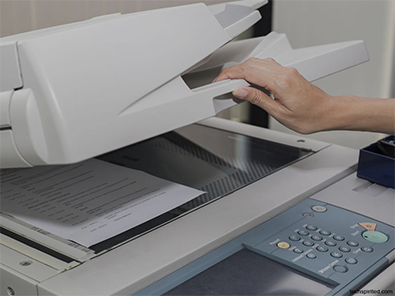BTA East’s Grand Slam event took place in Baltimore Sept. 26 and 27, and as is typical of these events, it managed to find the perfect combination of business and baseball.
The opportunity to see a game at a great stadium like Camden Yards brings joy to my baseball-loving heart, even when it’s the Red Sox playing, and even when said Red Sox completely spank the home team. You just can’t beat fall baseball.
But as this is an imaging blog and not a baseball blog, I suppose that’s enough about baseball. As I said, there was some business too – a good day-plus worth. And having sat through more than my share of conferences, summits, seminars and the like, I have to congratulate the BTA on a really stellar lineup. The Grand Slam was really aptly named; the presenters hit it out of the park, and I enjoyed the 30-minute interludes between presentations to walk around and visit the sponsor tables.
Leading off the lineup was Samsung’s Tod Pike with the event keynote. Always a dynamic addition to an event, Pike showed why Samsung is a technology leader as he discussed the changing landscape and how BTA dealers can keep up with change. Evolving and adding services is key; replace print with managed imaging services or something similar, he says. Information is displayed regardless of form factor – be it in print, on laptops, on tablets, etc. – so bundle it into a solution for customers.
Tod Pike, vice president of the Enterprise Business Division of Samsung Electronics America, delivers the keynote address at the BTA’s Grand Slam event in Baltimore.
Batting second — OK, no, sorry, I’ll stop with the baseball metaphors. Kicking off the second day of the event was a dealer panel moderated by Frank Cannata titled “Our Industry Is Changing, Where Do We Go From Here?” Rick Bastinelli of Centric Business Systems, Leo Bonetti of Flo-Tech, Brad Cates of ProSource, Bill Fraser of Fraser Advanced Information Systems, and Greg Gondek of Advanced Copy Technologies sat on the panel and answered questions about the keys to success in today’s business, how their dealerships achieve success, and what changes need to be made. Some of the answers? Production print, managed services, low-cost service, color, acquisitions and luck.
Attorney Bob Goldbeg is probably another key to BTA dealer success, for those who take advantage of the incredible resource he offers. Goldberg provided legal insights including the latest on patent trolls as well as clarification of some data security issues.
One of my favorite presentations of the event was John Hay of Strategic Business Associates, who spoke about “Leadership Vs. Management.” I personally had some great takeaways from this presentation, one of my favorites being “managing is making sure you are doing things right, while leading is making sure you are doing the right things.”
Milton Bartley spoke about “Strategies for Success in Managed IT Services,” and having done it himself, he has some pretty good strategies. Managed IT is the MPS of three years ago, he says. When polled, about a fifth of the audience said they are currently doing some sort of managed IT; 100 percent said they wanted to. Gartner reports that 90 percent of companies will outsource some or all of their IT next year, so it’s a good time to make that happen.
Once you do make that leap, how do you get your clients to see you as a technology service provider for all of their technology, not just copiers? Darrell Amy had some great insights into marketing yourself as you make this change. You have to think from the clients’ perspective, he says. He also mentioned the fact that buyers are 60 percent of the way through the buying process by the time they contact a sales rep, so it’s critical to provide outstanding service to not only your clients, but your prospects as well.
This concept was reiterated in the final presentation of the day, “Building the 21st Century Sales Force.” The Internet is the new competitor, says Troy Harrison of SalesForce Solutions. It has changed the customer experience, so salespeople must use expertise rather than product pitches. Habitual customers buy because they always have, he says. Loyal customers buy because you’re keeping their business.
Plenty of food for thought to go along with the peanuts and Cracker Jack that evening.
Posted by Amy Weiss on 10/02/2013


